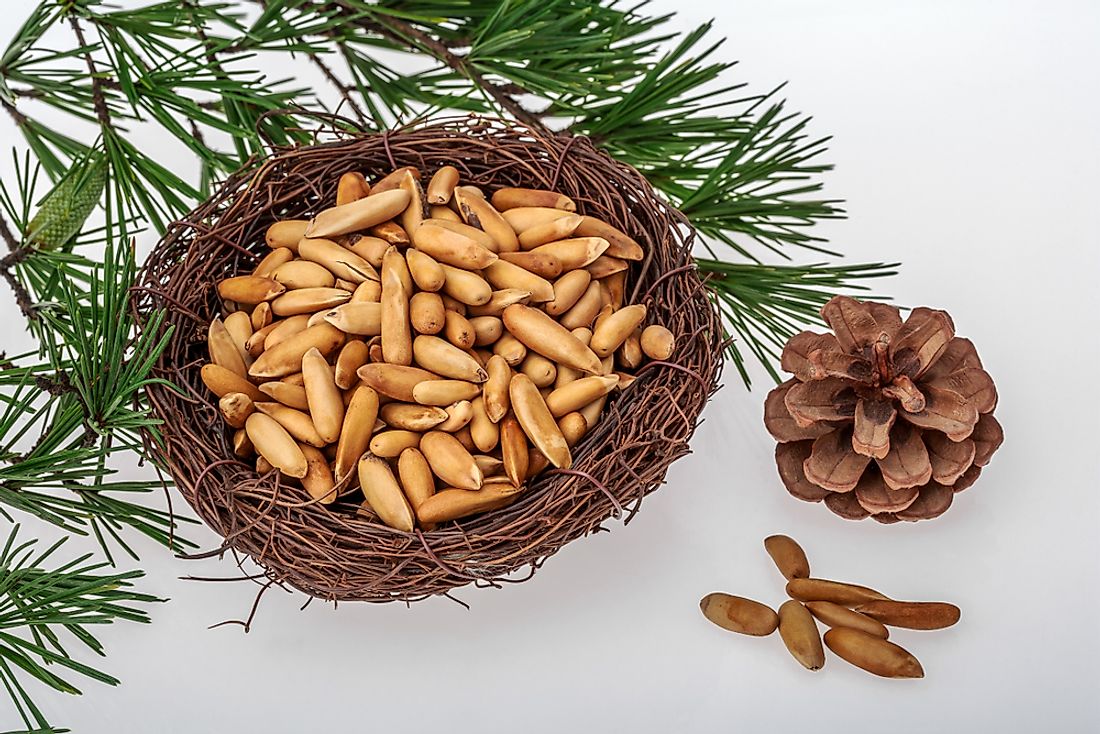Where do Pine Nuts Come From?

Pine nuts, which are referred to as pinoli in Italian and piñón in Spanish, are the edible seeds extracted from pine trees. Different species of pine trees grow around the world, resulting in many different types of pine nuts.
Pine Nut Species and Their Origins
There exist various types of pine nuts; one of them is the Chinese white pine (Pinus armandii). China produces, exports, and consumes the most pine nuts.
Another type of nut is the Siberian pine (Pinus sibirica). It is produced in Russia for commercial purposes. Other widely produced pine species are Chilgoza pine (Pinus gerardiana) and Korean pine (Pinus koraiensis) which are harvested in western Himalaya and northeast Asia consecutively. Lacebark pine and Siberian dwarf pine are also kinds of pine nuts.
The Swiss pine and the Stone Pine (Pinus pinea) that has been majorly produced and harvested in Europe for over 5,000 years are the other species of the pine nut. In North America, there are several pine nut species. However, there are only three main species, and the rest are slightly produced. The three leading types of nuts comprise the Mexican (Pinus cembroides), Colorado (Pinus edulis), and singleleaf (Pinus monophylla) pine nuts.
The remaining pine species that are not extensively produced consist of sugar, gray, Coulter, parry, and Torrey pine nuts. The Pinus monophylla seeds are harvested in Nevada and traded across the Western US for income.
Features of Pine Nuts
They are shaped like a drop of tear. Pine nuts are tiny and have a delicious buttery taste. They are ivory colored and about half an inch in length. The seeds removed from the pinecone are the nuts, which usually come from inside a hard nut casing (the casing is inedible). To get a sweet, crunchy flavored taste from the pine nuts, one has to toast them slightly.
In appearance, European nuts are long but have a small width while Asian pine nuts are thicker and look like long grains of corn. For American pine nuts, they are easy to separate from their shell and are big.
Importance of Pine Nuts
Nutrition is one of the components of pine nuts. They contain about 10-34% of protein. However, it varies for each species. The stone pine species has the greatest quantity of protein. Pine nuts also contain nutritional fiber. Unshelled pine nuts are long lasting when they are preserved in refrigerators and dried. Shelled pine nuts spoil and rot easily especially when stored in warm areas.
Notably, pine nuts have been used for food in many countries in Europe and Asia for years. Pine nuts are usually combined with vegetables, meat, salads, or bread. It is also popularly served as pesto, crunchy salad topper, and used in desserts in the United States.
Apart from pine nuts’ delicious taste, another reason for eating them is that they help one to trim body weight. In addition, pine nuts help in controlling cravings. They also boost energy because they possess nutrients like iron and protein. Lastly, pine nuts are helpful in reducing heart disease because they contain components such as magnesium, which is essential for heart health.











